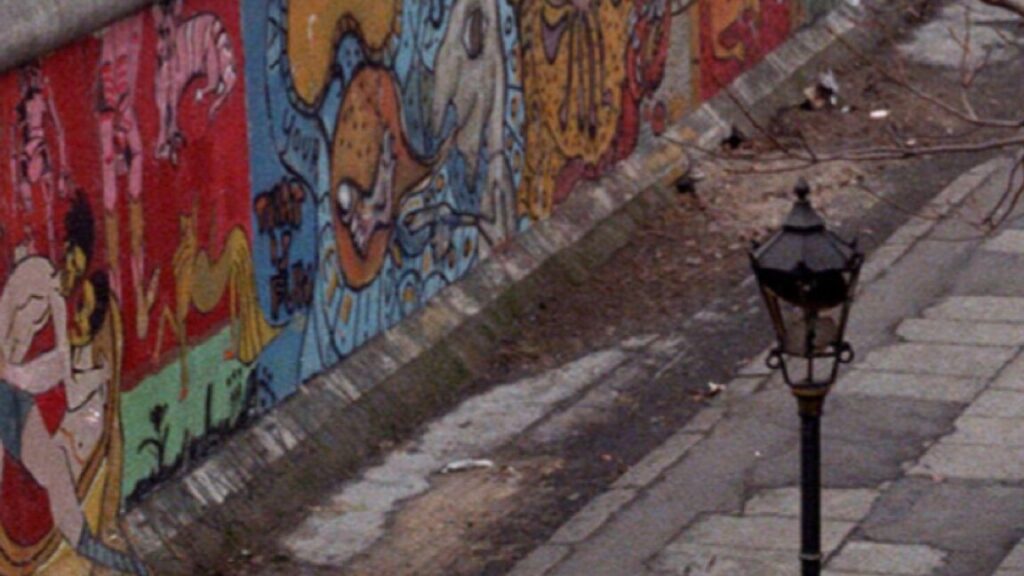Telltale fragments
Close examination of chips, labeled according to their blue, yellow, or red color, that once belonged to art on the Berlin Wall reveals brushstrokes, multiple layers, and the pigments used.
Credit:
Adapted from F. Armetta et al., 2024
Nondestructive techniques like Raman spectroscopy are often used to identify the molecular signatures of pigments, dyes, and other chemical compounds, but this usually requires bringing samples to the lab. Handheld Raman devices are used for cases where analysis must be done on-site, but they are far less precise than full-size laboratory equipment. So Armetta et al. decided to adopt a machine-learning approach to enhance the precision and sensitivity of spectral data collected by those handheld devices.
The team collected 15 pictorial fragments of five different colors from Berlin Wall paintings. They used handheld Raman spectroscopy on the paint chips and compared that spectral data to a commercial library of pigment spectra, confirming those findings with X-ray fluorescence and optical fiber reflectance spectroscopy.
Most of the fragments had two top layers that had been painted with a brush rather than spray paint; brushstrokes were clearly visible under a microscope in several cases. The underlying third layer, in contact with the masonry, was white and probably used to prepare the surface for painting.
Calcium and titanium were the most abundant elements in all the samples. Chromium and lead were present in a green-colored sample, and the authors think this was mixed with another color to get that particular shade. There were also traces of copper in blue and green samples.
Armetta et al. also created their own mock-up samples by mixing commercial German acrylic paints (commonly used since the 1800s) in different ratios to try to match colors and tints from the fragments—crucial information for restoration. This is where their machine-learning algorithm (dubbed SAPNet) proved useful. They trained it on the Raman spectral data from the Berlin Wall samples and used it to determine the percentage of pigment. The model concluded that the Berlin Wall paint chips contained titanium white and as much as 75 percent pigment.
“The identification of most of the components of the fragments was only possible through the comprehensive evaluation of the results provided by all the techniques [combined],” the authors concluded, further augmented by the development of SAPNet. “While SAPNet was specifically tailored for pigment mixture analysis, its robust framework demonstrates the transformative potential of deep learning methodologies for Raman spectral analysis across diverse scientific and industrial applications.”
DOI: Journal of the American Chemical Society, 2024. 10.1021/jacs.4c12611 (About DOIs).
